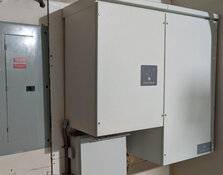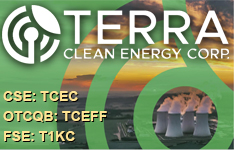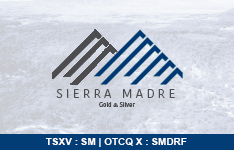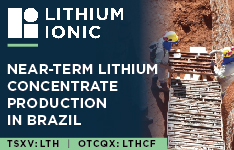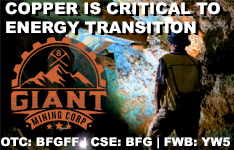Eguana Technologies Inc. (EGT:TSX.V; EGTYF:OTCQB) provided an update on April 15 confirming that its exclusive megawatt-scale feeder program in British Columbia surpassed the halfway mark, with more than half a megawatt of Eguana Evolve energy storage systems shipped over 12 weeks. These distributed battery systems, installed as part of a utility-led Demand Response initiative, are designed to manage electricity consumption at the local level by charging and discharging energy based on peak grid demand. The program aims to strengthen two targeted electricity feeders and reduce the cost of peak power by actively managing behind-the-meter energy use.
Each installed system contributes monthly recurring revenue for Eguana through its integrated software and hardware platforms. The Evolve hardware is paired with Eguana’s Exchange and Edge cloud platforms, which enable system-level control via a Distributed Energy Resource Management System (DERMS). The utility’s DERMS software partner manages this grid support through coordinated charge and discharge cycles. According to Eguana CEO Justin Holland in the news release, “We have crossed the half megawatt line, or over 50 percent of the program, with installations being completed daily along with commissioning and DERMS engagement.” He added that the company expects the full megawatt of systems to be shipped and installed by spring.
In addition to the progress in British Columbia, Eguana recently completed fleet-level demand response testing with a utility retailer in California. The company is also finalizing a summer rollout in Alberta to support a constrained feeder and has been invited to submit a proposal for an upcoming utility program in Ontario. Eguana continues to participate in demonstrations across Vermont, Oregon, and Nova Scotia. Holland noted growing interest in integrated battery and DERMS solutions among utilities, stating, “We can certainly feel a change in the air as more utilities move towards advanced batteries... to manage near term capacity and demand peak constraints on the grid.”
Renewable Energy Storage and Grid Services
On April 14, Warp News added further context by reporting that countries in the Global South were now increasing their share of electricity from solar and wind power at twice the rate of countries in the Global North. In 2024, investments in clean energy in these regions were seven times greater than fossil fuel investments. The article stated, “Latin America is advancing faster than China in terms of solar and wind power share, and Southeast Asia is on track to do the same.” The report attributed this shift to local consumer demand and declining equipment costs, noting that solar panel prices dropped by 35 percent in 2024 alone.
A CleanTechnica report published that same day highlighted that “renewables generation increases 84 percent in the five years to 2030 and then doubles again by 2050.” The report, which cited BloombergNEF data, explained that solar energy was expected to lead the way with an estimated 6.9 terawatts of new capacity installed globally by 2035. Virtual power plants and demand response systems were also called out as essential to managing peak load and optimizing distributed renewable generation. According to BloombergNEF, “ever-lower costs and maturing technologies drive faster adoption” of both renewables and electric vehicles.
According to an April 15 article on Energy Tech, the adoption of green electricity in the United States has reached a tipping point, driven by regulatory pressure and increasing economic viability. The report noted that “the US is forecasted to add nearly 500 GW of renewable energy capacity through 2030,” with over 20 percent of current US electricity generation already coming from renewable sources such as wind and solar. For businesses, the transition to green electricity was described as “a strategic imperative that will not only deliver environmental benefits, but create a competitive advantage and drive long-term profitability.”
The article also emphasized the importance of energy storage and smart grid integration. It stated that “the power grid plays a fundamental part in green electricity’s role and adoption,” pointing out that many grid infrastructures were built for fossil fuels and must now adapt to accommodate renewable inputs. With network reliability a growing concern, tools like distributed energy resources and battery storage systems are playing a key role in enabling renewable integration and demand-side flexibility.
A piece also published on the 15th by Rejournals focused on renewable energy retrofits in aging industrial facilities, especially in urban areas like Chicago. The report underscored the complexity of these upgrades, particularly in older buildings with outdated electrical systems. Despite these hurdles, the article emphasized that qualified electrical contractors were helping facility owners navigate retrofits by offering holistic solutions that ensured long-term efficiency and code compliance. “Retrofitting older industrial buildings for renewable energy can be complex,” the report stated, “but rewarding and worthwhile for many facilities.”
Together, these sources painted a detailed picture of a sector in transition. While renewable generation continues to expand rapidly, the integration of battery storage, virtual power plant platforms, and distributed grid solutions remains central to meeting the challenges of scalability, reliability, and demand management in both developed and emerging markets.
Third-Party Expert Analysis of Eguana
On March 24, technical analyst Clive Maund published a detailed evaluation of Eguana Technologies Inc., in which he rated the company a “Strong Buy.” He described Eguana as being “centrally positioned to mobilize to meet a broad-based surge in demand for its systems,” citing its integrated suite of energy storage hardware and cloud-based software. Maund explained that the company’s solutions fully addressed “all aspects of end-user power generation, distribution, and energy storage,” which he believed enabled significant cost savings and reduced risk of power outages.
In the same report, Maund emphasized the strategic significance of Eguana’s recent settlement with Duracell Power Center, highlighting the infusion of both cash and finished goods. “Duracell Power Center will transfer ownership of US$1.1 million in additional finished goods,” he noted, adding that this included five-kilowatt and ten-kilowatt Evolve systems. He also cited a US$250,000 cash payment and an increase in manufacturing credit to US$1.45 million as steps that addressed “near-term liquidity relief” and reduced working capital requirements through 2026, according to Eguana CEO Justin Holland.
Maund added that Eguana had completed integration of its Evolve system with EnergyHub as of March 11. He stated that the company had also entered into a collaboration with Itron to integrate its energy storage systems with Itron’s IntelliFLEX grid edge DERMS (Distributed Energy Resource Management System) solution. In his assessment, this placed Eguana in a favorable position with utilities seeking to scale distributed energy procurement.
He further cited evidence of “persistent accumulation” of the stock since September 2024 and analyzed the price chart as forming a “Saucer base pattern” supported by rising accumulation indicators. He stated that the technical indicators suggested the stock was “marking out the Right Shoulder” of a Head-and-Shoulders bottom, signaling potential for an upward breakout. Maund concluded, “Eguana Technologies is viewed as a stock with an exceptionally positive risk/reward ratio,” and listed a series of price targets adjusted for a proposed 1-for-10 share consolidation.
Expanding Footprint Through Integration and Recurring Revenue
Eguana’s ongoing utility projects build on a platform described within its investor resources, which outlines the company’s vertically integrated model across hardware, software, and installation. The Evolve systems, manufactured for both residential and small commercial use, are deployed at the grid edge and integrated with on-site renewable generation to support distributed grid infrastructure. This positions the company within the growing North American solar-plus-storage market, which Eguana estimated at over US$60 billion by 2030.
The company’s cloud-based Virtual Power Plant (VPP) solution, paired with its DERMS-compatible hardware, enables aggregated system control and fleet-wide energy optimization. Eguana generates revenue through what it calls a “Three Pillar Revenue Stack,” consisting of sales from wall-mounted batteries, rooftop inverters, and software services. This recurring revenue model is supported by partnerships with distributors and utilities, including existing relationships with Mercedes-Benz, Duracell, and Itochu.
With thousands of units already installed globally and production capacity exceeding 24,000 systems annually, Eguana is positioned to support multiple grid modernization efforts. Its capital-light approach and integrated product line offer scalability across different markets, including current deployments in Canada, the United States, Europe, and Australia. The company's investor materials also cited over 10,000 installers and more than 2,000 branch locations tied to its distribution network. These assets support further expansion in the utility and residential energy storage sectors as policy-driven electrification initiatives continue to accelerate.
Ownership and Share Structure
 Streetwise Ownership Overview*
Streetwise Ownership Overview*
Eguana Technologies Inc. (EGT:TSX.V; EGTYF:OTCQB)
According to the company, about 0.5% of Eguana is owned by management and insiders.
24.6% is held by the Japanese ITOCHU Corp., the company said.
The company's market cap of CA$4.48 million, according to Refinitiv. Its 52-week range is CA$0.05 and CA$0.20.
| Want to be the first to know about interesting Renewable - Solar investment ideas? Sign up to receive the FREE Streetwise Reports' newsletter. | Subscribe |
Important Disclosures:
- Eguana Technologies Inc. is a billboard sponsor of Streetwise Reports and pays SWR a monthly sponsorship fee between US$4,000 and US$5,000.
- As of the date of this article, officers and/or employees of Streetwise Reports LLC (including members of their household) own securities of Eguana Technologies, Inc.
- James Guttman wrote this article for Streetwise Reports LLC and provides services to Streetwise Reports as an employee.
- This article does not constitute investment advice and is not a solicitation for any investment. Streetwise Reports does not render general or specific investment advice and the information on Streetwise Reports should not be considered a recommendation to buy or sell any security. Each reader is encouraged to consult with his or her personal financial adviser and perform their own comprehensive investment research. By opening this page, each reader accepts and agrees to Streetwise Reports' terms of use and full legal disclaimer. Streetwise Reports does not endorse or recommend the business, products, services or securities of any company.
For additional disclosures, please click here.






